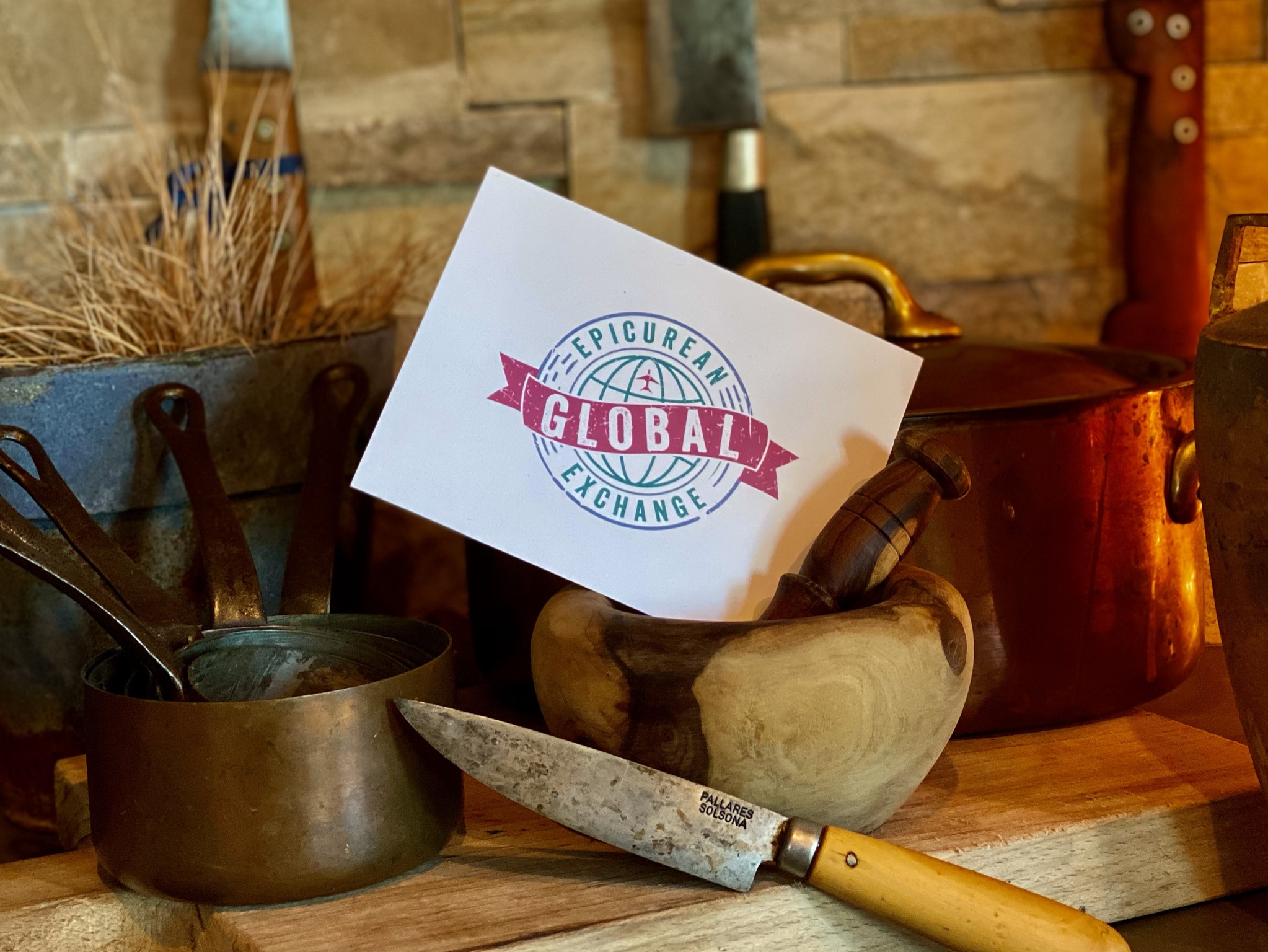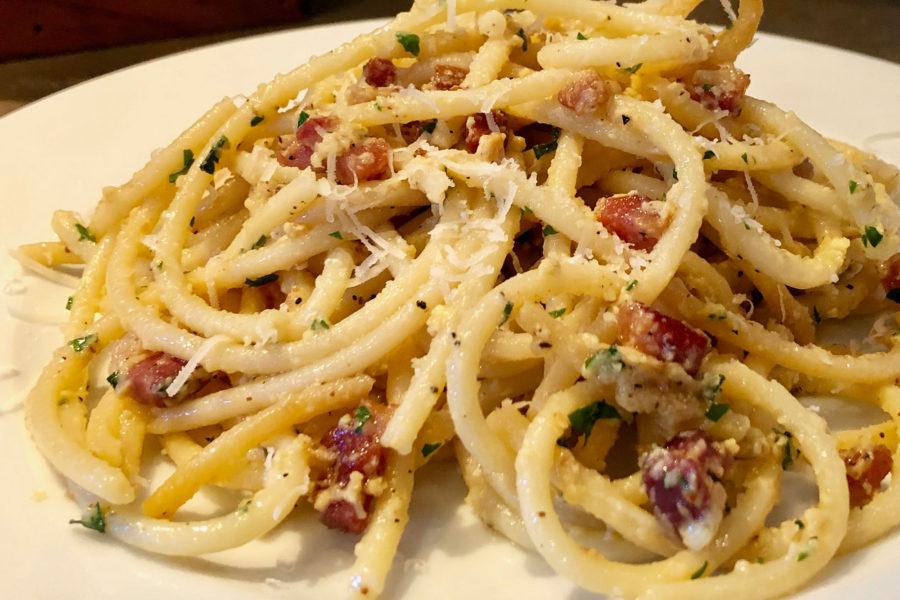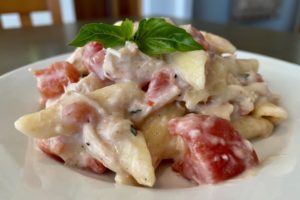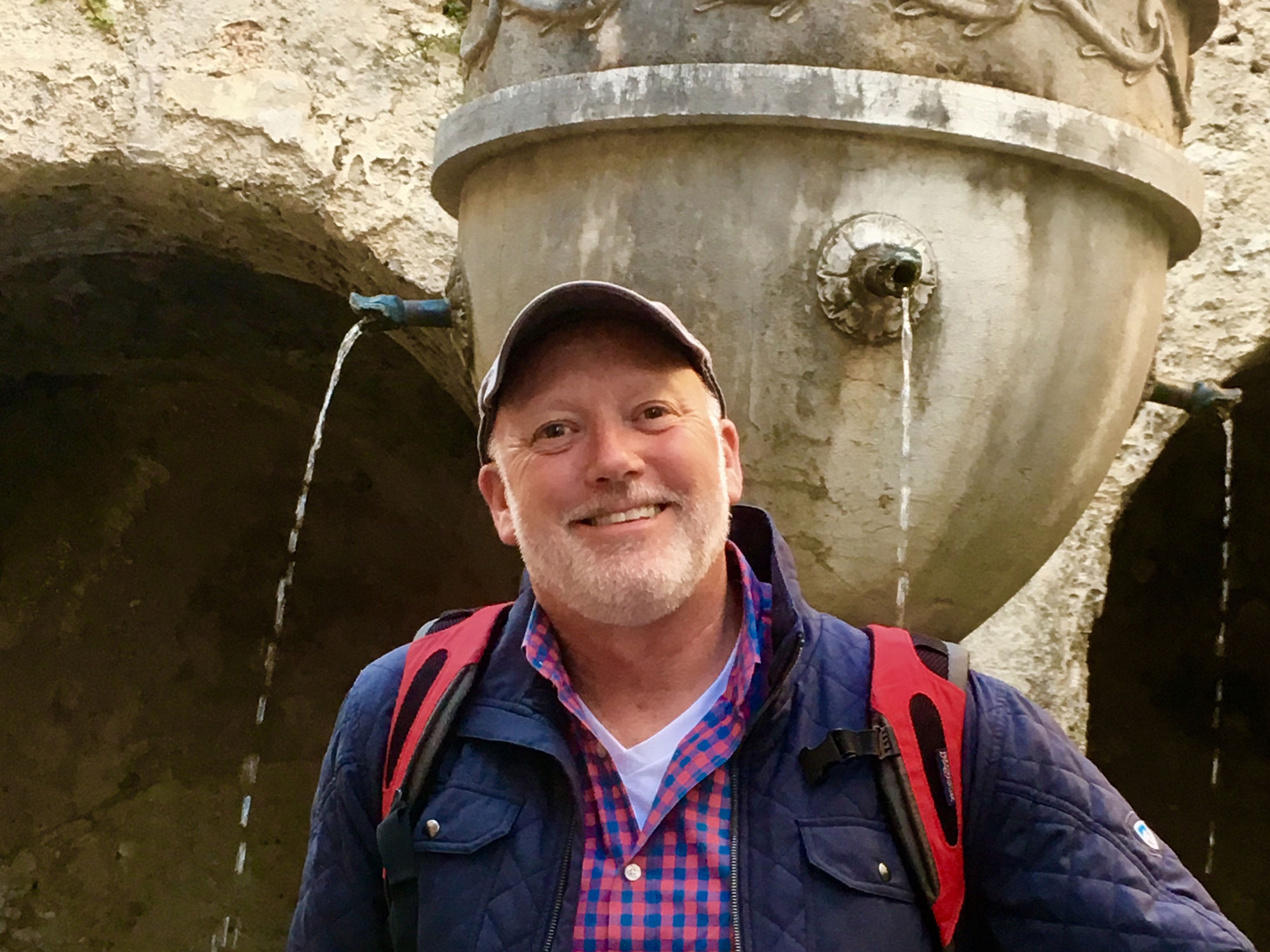During our tours, Epicurean Exchange Culinary Travel always learns new dishes and techniques from amazing local Chefs. We return with new repertoire to share with our students and followers. We were in Tuscany and the Florence area for two weeks last year, and Chef Charlie and his group were taught to make his favorite pasta dish – Pasta Carbonara!
This dish is only as good as the ingredients. Pasta: The best Italian-made pasta for this dish – Pasta Adruzzese di semola di grano duro (made with semolina durum wheat) I found this at the Berkeley Bowl and Market Hall, Rockridge. Pancetta: Molinari (found at better market’s deli counters; sliced to order). Parmigiano-Reggiano Cheese: buy a block and grate fresh – please no Kraft in the green canister : ) AND Extra-virgin olive oil from Amphora, Lafayette and lots of freshly ground black pepper (the characteristic flavor of the dish).
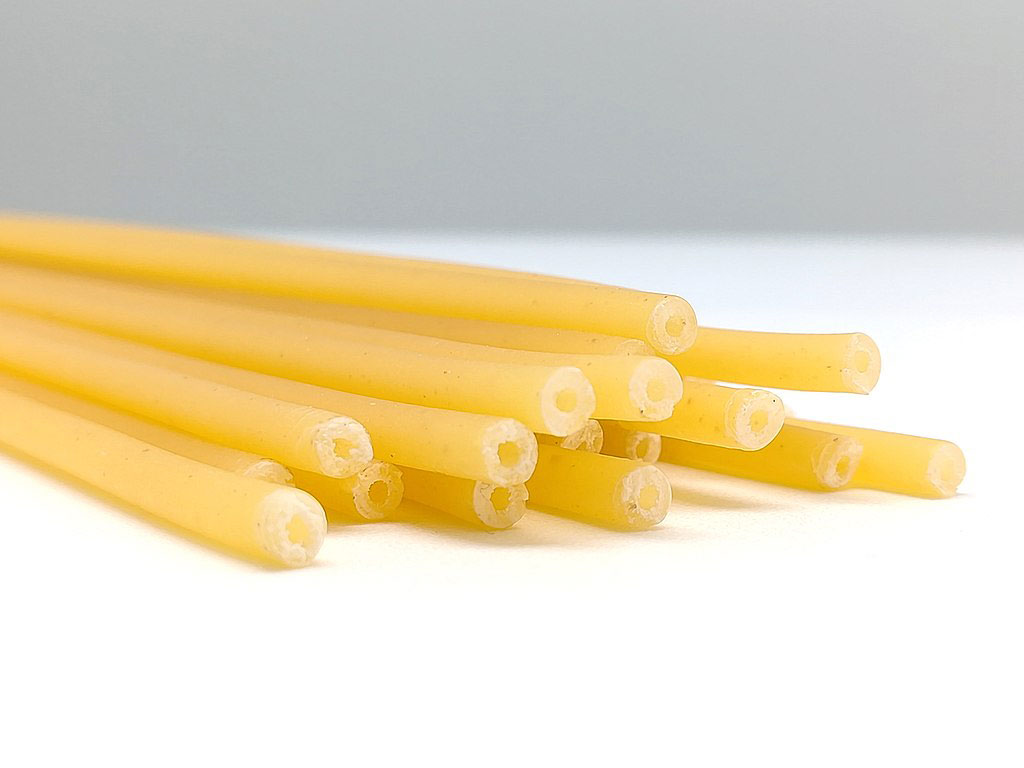
I have come to prefer Bucatini pasta for this dish; it has structure and a firmness that holds up to the ingredients. According to my FB friend, Mike Fasano, of Mike’s Italian Kitchen, “Bucatini, also known as perciatelli, is a thick spaghetti-like pasta with a hole running through the center. The name comes from Italian: buco, meaning “hole”, while bucato or its Neapolitan language variant perciato means “pierced.” It is made of hard durum wheat flour and water.”
Bucatini Pasta Carbonara
1-pound dried Bucatini pasta* (or spaghetti)
2 tablespoons olive oil
4 ounces pancetta, cubed
4 cloves garlic, finely chopped
2 large eggs
1 cup freshly grated Parmesan-Reggiano, plus more for serving
Freshly ground black pepper (lots)
1/4 cup chopped Italian flat-leaf parsley
*Recommend: Rustichella d’Abruzzo Durum Wheat Bucatini Pasta
NOTE: Prepare the sauce while the pasta is cooking to ensure that the pasta will be hot and ready when the sauce is finished; it is very important that the pasta is hot when adding the egg mixture, so that the heat of the pasta cooks the raw eggs in the sauce.
• Bring a large pot of salted water to a boil, add the pasta and cook for 10 to 12 minutes; until al dente (or to your desired doneness).
• Meanwhile, heat the olive oil in a deep skillet over medium heat. Add the pancetta and sauté for about 3 minutes, until the pancetta is slightly crisp and the fat is rendered. Turn heat to low. And add the garlic into the fat and sauté for a few seconds.
• Once the pasta is done, and before draining, reserve 1/2 cup of the starchy cooking water to use in the sauce. Then, drain the pasta well, but do not rinse. Set aside.
• Beat the eggs and cheese together in a mixing bowl, stirring well to prevent lumps.
• When the pasta is ready, heat the skillet again with the pancetta on medium-high until hot. Add the hot, drained spaghetti to the pan and toss for 2 minutes to coat the strands in the pancetta fat and fold the pancetta into the pasta.
• Remove the pan from the heat and pour the egg and cheese mixture on to the pasta, then stir quickly until the eggs thicken, and coat the pasta, but do not scramble (this is done off the heat to ensure this does not happen). Thin out the sauce with a bit of the reserved pasta water, until it reaches desired consistency (slightly creamy). Season the carbonara with freshly ground black pepper and kosher salt, to taste; add 1/2 of the chopped parsley and stir to combine.
• Mound the pasta into warm serving bowls and garnish with chopped parsley, more black pepper and pass the cheese block with a hand grater for those who care for more.
Serves 4 to 6
© 2019, Epicurean Exchange. All rights reserved.
